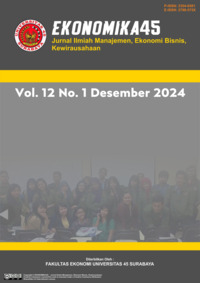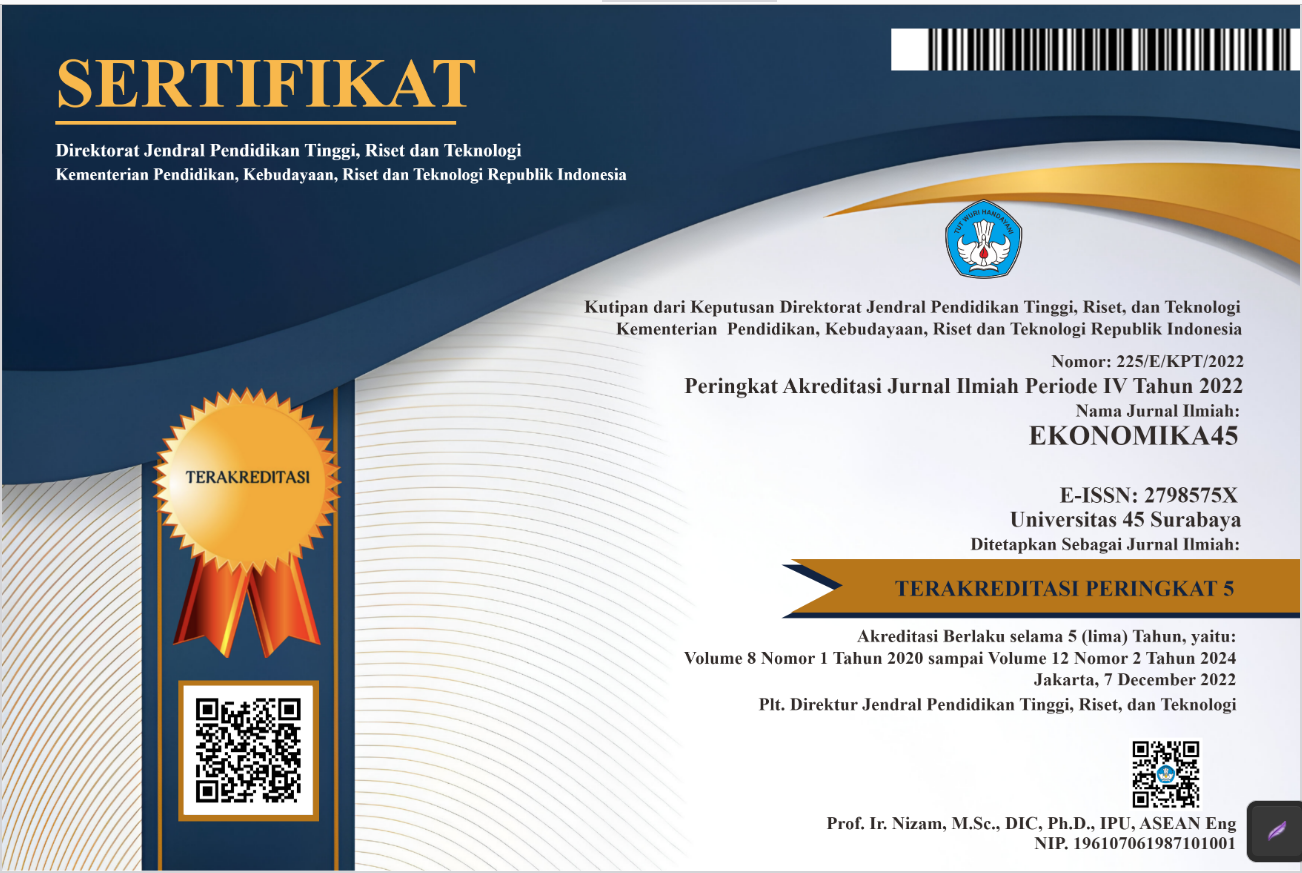Perencanaan Manajemen Proyek dengan Metode Critical Path Method (CPM) dalam Pelaksanaan Program PKL di SMK Cendekia Batujajar
DOI:
https://doi.org/10.30640/ekonomika45.v12i1.3617Keywords:
Project Management, Field Work Practice Program, Critical Path MethodAbstract
Effective project management planning is a key element in the success of a project. Among the stages of project management, scheduling activities has an important role in ensuring the project runs according to plan. One of the methods used in determining the optimal time of project work is the Critical Path Method (CPM), which helps in calculating the estimated time of each activity and determining the critical path of the project. This study aims to examine the planning and implementation of the Field Work Practice Program at SMK Cendekia Batujajar, focusing on time management and constraints that may occur. The research method used is quantitative with a descriptive approach. Data were collected through observation and document analysis related to the planning and implementation of PKL at SMK Cendekia Batujajar. The results showed that the planning of the PKL program has been carried out based on government regulations and industry needs, with details of activities that have been compiled in the schedule. Through CPM analysis, the estimated project completion time is 242 days, with the identification of critical paths that must be considered in maintaining the project schedule. Based on the analysis, the planning of the PKL program at SMK Cendekia Batujajar has been carried out in a detailed and systematic manner, with the use of the CPM method to identify the critical path. However, challenges in time management and other constraints need to be considered in the implementation of the PKL project at the school.
References
Aziz Sholeh, Abdul, et al. (2024). Kompensasi terhadap motivasi kerja karyawan pada PT. Insolent Raya di Surabaya. Journal of Management and Creative Business, 2(1), 82–96.
Balaka, M. Y. (2022). Metodologi penelitian kuantitatif. Bandung: Widina Bhakti Persada.
Beranda / Manajemen. (2019, February). Pengertian, manfaat, metode, dan penyusunan network planning. Retrieved from Kajian Pustaka: https://www.kajianpustaka.com/2019/02/pengertian-manfaat-metode-dan-penyusunan-network-planning.html
Caesaron, D., & Thio, A. (2015, August). Analisa penjadwalan waktu dengan metode jalur kritis dan PERT pada proyek pembangunan ruko (Jl. Pasar Lama No. 29, Glodok). Journal of Industrial Engineering & Management System, 8(2).
Hamdan, & Kadar. (2016). Manajemen proyek. Bandung: Pustaka Setia.
Heizer, R. (2008). Perbandingan pemakaian jaringan AON dan AOA. 93.
Herjanto, E. (2008). Manajemen operasi. (p. 359).
Husen, A. (2009). Manajemen proyek: Perencanaan, penjadwalan, & pengendalian proyek. Yogyakarta: ANDI.
Kristiawati, et al. (2019). Citra merek, persepsi harga, dan nilai pelanggan terhadap keputusan pembelian pada minimarket Indomaret Lontar Surabaya. Jurnal Ilmu Ekonomi dan Manajemen (JMM 17), 6(2), 27–36.
Metode ilmiah: Syarat dan langkah-langkahnya. (n.d.). Retrieved from DetikEdu: https://www.detik.com/edu/detikpedia/d-5514912/metode-ilmiah-syarat-dan-langkah-langkahnya
Pengertian perencanaan: Jenis-jenis, fungsi, dan karakteristik. (n.d.). Retrieved from Gramedia Blog: https://www.gramedia.com/literasi/perencanaan/
Project Management Institute. (2013). A guide to the project management body of knowledge (5th ed.). Pennsylvania: Project Management Institute.
Proyek. (n.d.). Retrieved from Wikipedia Ensiklopedia Bebas: https://id.wikipedia.org/wiki/Proyek
Rukajat, A. (2018). Pendekatan penelitian kuantitatif (Quantitative research approach). Yogyakarta: CV Budi Utama.
Santosa, B. (2009). Manajemen proyek: Konsep & implementasi. Yogyakarta: Graha Ilmu.
Widyasari, S. (2008, April). Suatu pendekatan strategik dalam pengembangan kompetensi. Competency-Based Education and Training (CBET).
Downloads
Published
How to Cite
Issue
Section
License
Copyright (c) 2024 EKONOMIKA45 : Jurnal Ilmiah Manajemen, Ekonomi Bisnis, Kewirausahaan

This work is licensed under a Creative Commons Attribution-ShareAlike 4.0 International License.









